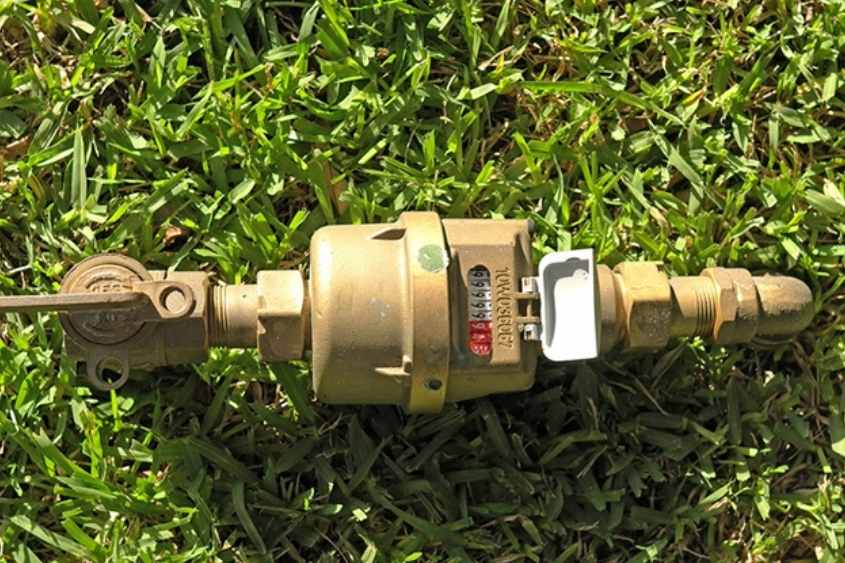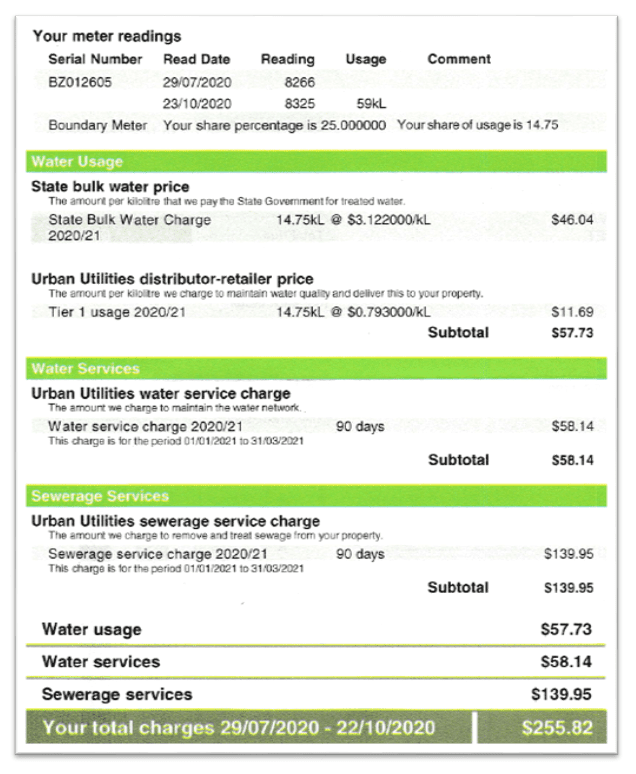
Understanding Body Corporate Disclosure Statements
In Queensland, the law mandates that sellers of lots in community title schemes provide a disclosure statement to prospective buyers before entering into a contract.

Home » Committee advice » Individual water meters in body corporate properties
Water distributor-retailers have different methods of supply and charging for water. Depending on the local government area, your water charging will be administered by:
Occurs rarely
Common for pre-2008 buildings
Standard after 2008
The method for your body corporate applies to all lots within that body corporate. It is not possible to have some units with individual water meter reading, and other units in the same complex being billed on the contribution schedule lot entitlement method.


Whilst each water distributor-retailer’s invoice looks different, they generally show the same types of information. If the current method is not clear, you can call your local water retailer and ask them.
A water bill includes more than just water usage. Each water bill includes:
Any change to the water billing arrangements (separate meters or not) will not impact the water service fees, and sewer service fees.
Case study:

Figure 3 – A typical Queensland Urban Utilities water bill
In this example, the water bill splits out how much of the bill relates to water usage, water services, and sewer services.
Water usage
Water services
Sewage services
Total
$57.73
$58.14
$139.95
$255.82
$28.87
$58.14
$139.95
$226.96
(saving $28.87)
$115.46
$58.14
$139.95
$313.55
In this real-life example, if the water usage for this unit halved (imagine the resident only uses water every second day), the bill would only reduce by $28.87. The rest of the costs on the bill are anchored by the fixed-price water service charge, and sewer service charge.
If my property becomes separately metered for water, I can pass on my whole water bill to my tenant. (example: $255.82/quarter)
A separate water meter is all I need to start charging my tenant for water.
If my property becomes separately metered for water, I won’t pay for water usage at all.
I use less than the average amount of water. Separate water bills will mean my bill becomes cheaper.
Our building has water meters already, let’s just use those.
Every owner in the body corporate will agree with me and approve this project – it benefits everyone.
Only the amount for water consumption can be passed on. (example: $57.73/quarter)
A plumber must also inspect the unit, and certify that all water devices are low-flow and water-efficient. Often pre-2008 constructed buildings are not water-efficient and need to be upgraded at the owner’s cost.
Moving from contribution schedule lot entitlement billing to separate meters means the body corporate will start receiving a water bill for the common areas.
This will increase levies, and cannot be passed on to the tenant.
Water retailers have very strict requirements for water meters. In many cases even if buildings have existing separate water meters, they are often non-compliant and the water retailer will not rely on them. Usually there is an up-front cost to replace all water meters.
Separate water meters may cause bills to increase, even if the person’s actual water usage is lower than the average in the complex. This depends on how the site was structured before the change to separate water meters.
The total usage of water will not change. For every owner who is using less than average, another owner is using more than average.
For every water bill that reduces, another owner’s bill will increase.
For some owners, particularly investor owners, there is a genuine saving in water bills if the body corporate installs individual water meters. This benefit however must be compared against the cost for installing the water meters and other related infrastructure and plumbing upgrades.
To categorise who wins and who loses in separate water metering, let’s look at an example building:
Single/couple
(low water usage)
Water bill will decrease, as actual usage is below averate
Family
(high water usage)
Water bill will increase, as usage is above average
Tenant mix will change during ownership
Owner’s water bill may increase OR decrease depending on the usage by the tenant.
Levies will increase slightly due to common area usage
Owner may be able to recoup water usage portion from the tenant, if property is water efficient. It owner can recoup from tenant, owner’s cost should reduce to jus the fixed charges.
Tenant may start to receive water bills from owner, if property is water efficient.
Name on account: In Queensland, it is not possible for the primary water bill for a property to go into the name of the tenant.
Whilst in other states, tenants can be expected to put the water service into their own name (just like electricity, internet and gas), in Queensland the water account is always in the name of the owner.
For investor-owners who are entitled to recover water usage, it is up to the owner to recoup the water usage directly from their tenant.
2 bedrooms
5 entitlements
2 bedrooms
5 entitlements
2 bedrooms
5 entitlements
3 bedrooms
8 entitlements
3 bedrooms
10 entitlements
50L per day
60L per day
70L per day
80L per day
90L per day
50/350L
$100.00
60/350L
$120.00
70/350L
$140.00
80/350L
$160.00
90/350L
$180.00
Let’s look at what happened:
Unit 1, 2 and 3 – These owners were previously paying the same amount for water ($106.06) as they had an equal number of entitlements, even though their real water usage was different. All of these owners were using less than the average consumption. After water meters, only the lowest water user made a saving.
Unit 2 water cost increased, even though their personal water consumption was 60L per day, which is less than average for the building, and less than average for their local area. This probably came as a shock to this owner, who would have expected their water bill to reduce.
Unit 4 and 5 – These owners are high water users, using 15% more and 29% more than the average household water user. Despite being higher water users, the move to separate water meters actually benefitted these two owners, because the old method of contribution schedule lot entitlements had assumed their consumption to be even higher than it was.
The saving in this example for high water users, is subsidised by units 2 and 3 who pick up the difference
As mentioned earlier, investor owners face some additional challenges before they can start to recover the water usage component of bills from their tenant.

In Queensland, the law mandates that sellers of lots in community title schemes provide a disclosure statement to prospective buyers before entering into a contract.

Understanding how your individual levy amount is calculated can help you appreciate where your money goes and ensure transparency in the management of your community. Here’s a breakdown of the aspects involved in calculating levy amounts.